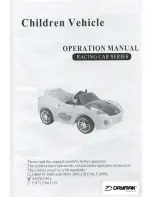
D 5. Position a #7 rib over the plan and raise
the spar up off the work surface and into the rib
notch. Use a 90 degree triangle to keep the rib
perpendicular to the work surface and tack glue
the rib to the spar. Do this for both sides of the
wing. HINT: You can tack glue or pin the rib jig-
tabs to the work surface to keep things in position.
D 6. The shaped and notched wing trailing
edges (F154W23) are fastened together by a thin
strip of balsa. Separate them by cutting with a
hobby knife Position the TE'S over the plan so the
notches are lined up with those on the plan and
carefully cut the TE'S to the correct length.
the LE so the 1/16" balsa LE sheeting (installed
later) will fit flush with the LE.
D 9. Glue the #8 ribs to the LE'S and the ends
of the TE'S. Raise the spar up into the rib notch
and glue it in place. Notice on the photo and on
the plans exactly where the TE is attached to the
rib.
D 7 Position the TE'S in place by working the
aft end of the #3 and #7 ribs into their respective
notches in the TE Center the TE'S vertically on
the ribs and glue them with thin CA. Make sure
the TE'S meet nicely at the wing centerline and
glue them together.
D 10. Install ribs 4, 5 and 6. Be sure to center
the ribs on the leading and trailing edges before
gluing them in place.
D 8. Position a notched balsa Leading Edge
(LE) so ribs 3 and 7 are centered vertically in their
notches and glue it in place Install the other LE.
Note: It is important to center the ribs vertically on
D 11. Bend the tips of the spars up slightly and
slide ribs 9 and 10 into place Glue the ribs to the
LE and the spar, making sure to keep the spar
pressed up into the rib notches.
30
Summary of Contents for F-15 EAGLE
Page 7: ...6 DIE CUT PATTERNS ...
Page 53: ...TWO VIEW DIAGRAM ...
















































